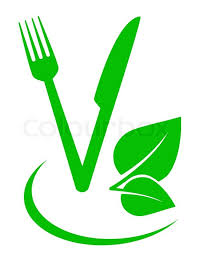Menu
Weight loss
Hormones
Sex
EXPLORE
MEET NU IMAGE MEDICAL
TREATMENTS
MEET NU IMAGE MEDICAL
TREATMENTS
MEET NU IMAGE MEDICAL
Getting enough protein on a vegetarian diet


One of the biggest problem a new vegetarian will face when starting their new meatless lifestyle, be it for medical, moral, or any other reason, will be finding a reliable and inexpensive way to continue eating the proper amount of protein. Protein is integral for more than just muscle building, and effects things like healthy hair, skin, nails, mental acuity, and cell development.
And while there is protein available in dairy and plant sources, finding complete proteins comprised of the 20 different amino acids that form peptides (which then form proteins) is what's really necessary to satisfy the body's daily requirement. Nuts and beans alone are generally not completely proteins, while meat and eggs are. But rice and beans can be eaten together to form a complete protein because their amino acids line up correctly, which means that while it may be more difficult, mixing the correct foods can allow a veggie eater to reach their protein goal with no issue.
The needs of each gender vary when it comes to protein, as well as factors such as activity level, and whether or not you work out constantly. For vegetarians, relying on high protein non-meats are a good start, and here are a few foods to consider:
Almonds: 21 grams of protein per 3.5 ounces. Not only that, but they're high in calcium, magnesium, iron, and potassium. Great with salads, cooked veggies, yogurt, and casseroles
Kidney beans: 13 grams of protein per cup. Filling and tasty, and versatile enough to taste great with plenty of dishes.
Greek yogurt- 17 grams of protein per container, depending on the brand. With a little bit of honey, Greek yogurt can be a delicious and healthy treat.
Soy: One of the few non-meats that are a complete protein on its own, with 10 grams of protein per half a cup a tofu, it can be cooked with just about any of your favorite sauces to make a delicious meal, while noting that a general rule is the firmer the tofu, the more protein you get in the serving.
Peas: A classic green, that also provides 7.9 grams of protein per cup and can be served alongside most any dish.
Quinoa: is a potent grain, packed with 8 grams of protein per cup (cooked), also containing considerable fiber, iron, magnesium and manganese. In addition to standing on its own in terms of texture and flavor, it can be incorporated into muffins, fritters and cookies, or used in casseroles.
Oats: By themselves oats contain six grams of protein per cup, but can be served well with seeds, nuts, or any low fat or soy milk to really up the protein output.
Broccoli: One cup can provide four grams of protein, not to mention any additional protein from your choice of cheese melted on top of it, while also being a great source of fiber.
Seitan: At a whopping 21 grams per a third cup, this ancient source of protein was supposedly created about a thousand years ago, as a meat substitute for Buddhist monks in China. Made with spices, herbs, gluten, and water or stock, this delicious protein packed super food can be simmered in soy infused broth to create a complete protein on its own.
This article is for informational purposes only and does not constitute medical advice. The information contained herein is not a substitute for and should never be relied upon for professional medical advice. Always talk to your physician about the risks and benefits of any treatment. Nu Image Medical may not offer the medications or services mentioned in this article.
